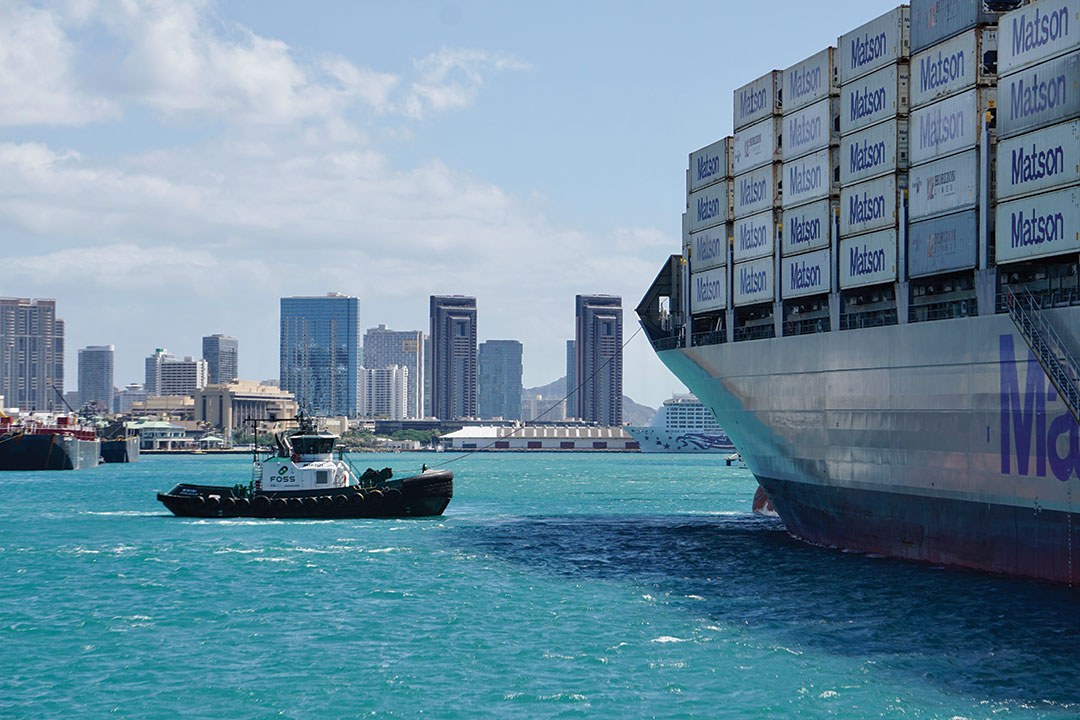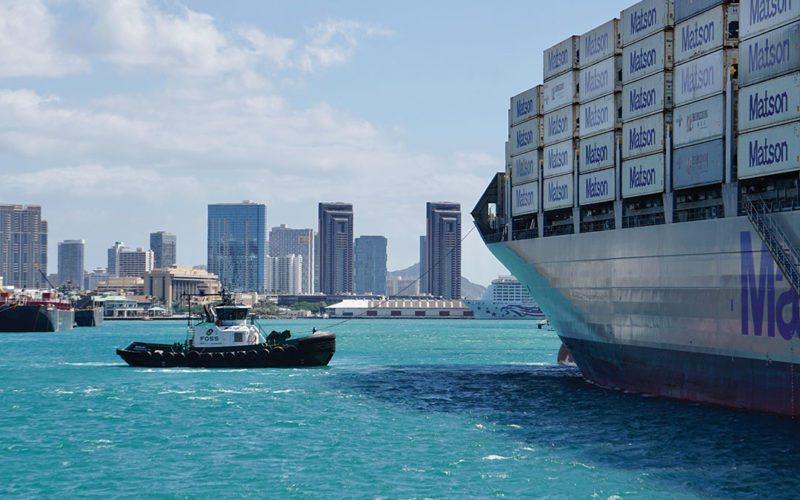
The deadline for compliance with Subchapter M inspection rules has come and gone, signaling a new era for America’s towing industry.
Operators had until July 19 to obtain a U.S. Coast Guard Certificate of Inspection (COI) indicating the vessel meets basic safety standards. The COI demonstrates the vessel has undergone a Coast Guard inspection, supplemented for most vessels by an audit/survey process through a third-party organization.
As of July 27, the Coast Guard had issued COIs for 4,497 vessels. That number likely will grow modestly as vessels operating with temporary COIs work toward full compliance, according to a Coast Guard spokesman.
The service issued 77 deficiencies for vessels that operated without a COI after the July 19 compliance deadline. The order effectively shuts down the vessels until they get a COI.
“This is a historic occasion for both the commercial towing industry and the Coast Guard,” Coast Guard Rear Adm. W. R. Arguin wrote on July 19 on the Coast Guard’s Maritime Commons blog.
“Today marks the conclusion of almost two decades of work with our industry partners,” he continued. “It is also the first time the Coast Guard successfully implemented a dual inspection subchapter, which includes a new comprehensive safety management system for both company and vessel compliance.”
The origins of Subchapter M date to the early 2000s when members of the American Waterways Operators (AWO) approached the Commandant of the Coast Guard in support of new towing vessel inspection rules. Congress authorized towing vessel inspection in the Coast Guard Authorization Act of 2004. The service published its final rule related to Subchapter M in 2016, and enforcement began in a tiered approach over four years starting in July 2019.
Operators have two means of obtaining compliance: through an annual Coast Guard inspection or through a separate Towing Safety Management System process overseen by third-party surveyors and auditors. Roughly three quarters of operators choose the latter option, the Coast Guard has said.
Caitlyn Stewart, the AWO’s vice president for regulatory affairs, said the rules have always been about promoting safety within the towing industry. She believes they have met that objective.
“The most important impact from Subchapter M is that the safety of the waterways has been improved,” she said in a recent interview.
Although the towing industry was still required to meet certain rules and standards prior to Subchapter M’s development, Stewart said there was no mechanism to ensure compliance. That created an uneven playing field between those who followed the rules and those who did not.
“There were some operators who were exceeding regulatory minimums and undergoing audits by third-party organizations and some operators who had no enforcement process whatsoever unless they were to get into an accident,” she said.
“That compliance verification process has really been a game-changer in giving the Coast Guard and industry confidence that all towing vessels on the waterways are operating at a level of safety that is going to drive down accidents and pollution events,” Stewart added.
The American towing fleet has shrunken by as many as 1,000 boats over the last five years as operators laid up or otherwise removed older tonnage ahead of Subchapter M deadlines. However, fears that the inspection regime rules would be onerous, hard to meet or disruptive for operators proved mostly untrue.
“For decades, our crews and equipment have been prepared for the new rules as a result of the high safety standards brought forth by our customers and our industry as a whole,” said Ben Morvant, operations manager with Crescent Towing, which operates in the Gulf of Mexico and around Savannah, Ga.
He said the company was fundamentally prepared for the arrival of Subchapter M rules. Even so, it still needed to coordinate between its mariners, port captains and compliance personnel to successfully navigate the phase-in process and gain full fleet compliance by the July 19 deadline.
“Our vessel crews, shore support staff, managers, third-party organizations, and vendors all played a major role in ensuring our success,” Morvant continued.
The AWO considers the Subchapter M process a model for how industry and the Coast Guard can work together to achieve regulatory changes without disrupting operators or commerce.
Questions of enforcement have arisen since implementation began in 2019. Some operators have argued privately and publicly that rules were being applied differently across different Coast Guard regions. Some also argue operators within the same region are treated differently.
Lindsay Dew, director of operations and compliance for The Great Lakes Towing Company, said frequent turnover among Coast Guard enforcement personnel is a recurring concern. There is also the perception that companies that follow the rules face heightened scrutiny.
“The Coast Guard must assure those operators who worked diligently to comply with the regulations, who continuously kept the Coast Guard apprised of their progress, are not the primary targets of enforcement,” he said by email, adding that, “Coast Guard enforcement efforts seem to fall on those that self-report deficiencies.”
He urged the Coast Guard to proactively interact with towing companies within a particular Captain of the Port (COTP) zone and to be clearer in its interactions with operators when taking enforcement action.
“The Coast Guard must be willing to explain operational or enforcement actions — using context and reference to regulatory requirements and rationale taken against or required of operators — especially as the actions vary widely from COTP to COTP,” Dew said, adding, “Too many times though, COTP orders defy logic.”
Stewart, with the AWO, has heard some concern from operators about enforcement from the Coast Guard. She suggested the service has worked hard over the last two years to better understand the vessels operating within a particular region.
“We have been gratified,” she said, “to see the Coast Guard step up its enforcement activities over the last two years and we are committed to continuing to work with them to ensure robust enforcement of Subchapter M.”

